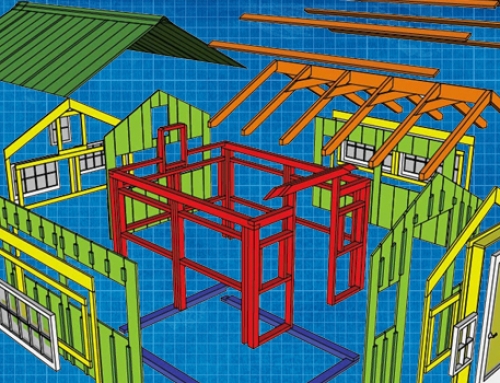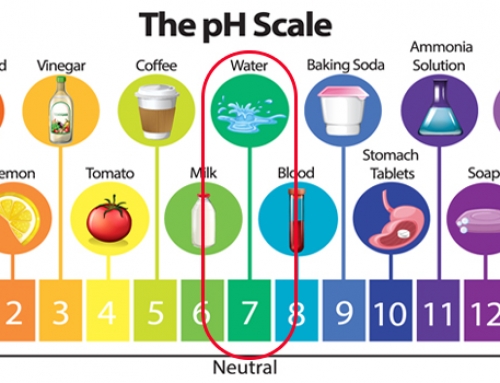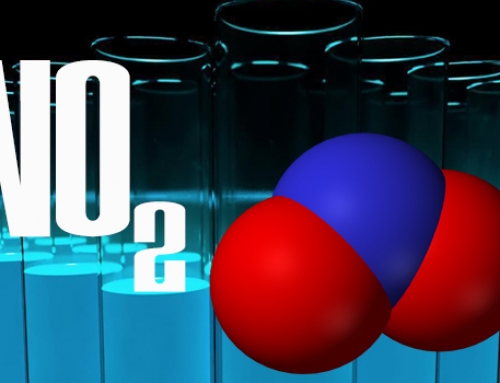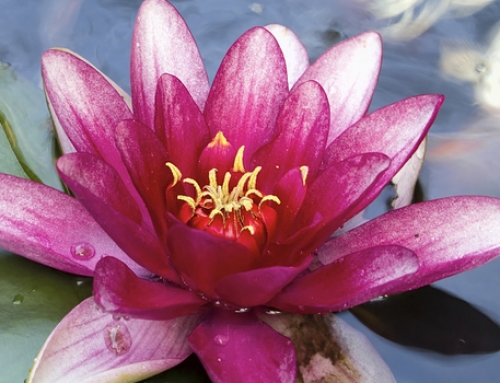Project Description
One of the reasons that you had when you decided to become a Backyard Farmer was liking the idea of producing fresh and organic vegetables. And with Aquaponics, this is among the major benefits. However, to ensure that your plants are healthy, so they can give you the nutritious lovelies you desire, you will need to avoid plant nutrient deficiencies in the implied aquaponic system. Plant nutrient deficiencies are common even using permaculture and other farming methods, and it is one of the most common problems in aquaponics.
Plant deficiencies in aquaponics occur when essential nutrients are not readily available in fish waste used to feed the plants. As malnutrition can stunt the growth of human beings, Deficiencies of Iron, Calcium and more can affect a plant’s growth and make plants more susceptible to plant diseases and insects. In aquaponics, to prevent or treat plant nutrient deficiencies, it is essential to recognize this problem early and identify the nutrients that your plant needs quickly.
Nutrients in Aquaponics
When it comes to the biology and chemistry that is happening in plant life, there are a few things we need to get an understanding of before we can properly identify and treat (or ideally prevent) any deficiencies that could occur. We all know plants need lights and nutrients to grow. In the traditional permaculture method of planting, these nutrients come from what’s in the soil. On the other hand, in an aquaponic system, these nutrients come from fish waste because of the absence of traditional soil. Nutrients have a significant role in any planting method. In aquaponics, there are two major categories of nutrients and functions within those categories that are essential for the plants in an aquaponics system.
The Functions Are –
– Mobile Nutrients: Yep, these nutrients move around inside the plant. In fact, these nutrients move from older leaves to newer leaves to assist with growth. If the plant is deficient in a mobile nutrient, the symptoms will show up in the older leaves first, because the nutrient will move up to where the new leaves are growing and won’t be replaced in the old leaves.
– Immobile Nutrients: These nutrients can’t move once they have been used in plant growth. This means that when a plant isn’t getting its fill, the symptoms will show up in the newer leaves first, as the old leaves still have their immobile nutrients fixed there, whilst there isn’t sufficient new supply for the new leaves.
The Categories to Know Are –
1. Macronutrients
There are six macronutrients that plants must have in large amounts. These nutrients are Nitrogen (N), Phosphorus (P), Potassium (K), Calcium (Ca), Magnesium (Mg), and Sulphur (S). Below are the list outlines of the function of these macronutrients within the plants.
- Nitrogen (N) Primary & Mobile
Nitrogen is a primary nutrient and the basis of all proteins. It’s essential for building structures, photosynthesis, cell growth, metabolic processes, and chlorophyll production. Nitrogen is a key element in the aquaponics ecosystem and serves as a proxy indicator for other nutrients. Usually, for it to be most effective for a plant the dissolved nitrogen is in the form of nitrate, but plants can use small quantities of ammonia and free amino acid to grow too. Excessive nitrogen can cause excessive plant growth resulting in lush, soft plants susceptible to diseases and insect damage and difficulty in flowering and fruiting.
- Phosphorus (P) Primary & Mobile
Phosphorus is an essential primary nutrient as well and is well known for photosynthesis and the formation of oils and sugars, and encourages germination and root development in seedlings. Phosphorus deficiency can cause low root development, absorption of additional nutrients and water.
- Potassium (K) Primary & Mobile
Potassium, another primary nutrient, functions as a cell signaling via controlled ion flow through membranes control the stomatic opening and are involved in flower and fruit set. In layman’s terms, it is the ‘street light signals’ that help everything else work together and grow. Potassium is involved in producing and transporting sugars, water uptake, disease resistance, and fruit ripening. All plants need potassium and can be affected by low levels of these nutrients.
Potassium deficiency in aquaponic plants needs treatment. Because a lack of potassium can negatively affect photosynthesis, which can also affect plant growth, it can also make the plant susceptible to infection or infestation that could lead to plant death.
- Calcium (Ca) Secondary & Immobile
Calcium is crucial for the plants’ healthy growth and sturdy cell walls and helps maintain plants’ strength and shape, similar to what it does for us with our bones. It is involved in the strengthening of stems and contributes to the production of flowers, fruits, and vegetables. Squash, tomatoes, and peppers are some plants susceptible to calcium deficiency.
It is a must to treat the calcium deficiency present in your system to prevent ruining the harvestable fruits or vegetables. Low calcium levels can also stunt plant growth and can cause plant death.
- Magnesium (Mg) Secondary & Mobile
Low magnesium is a common plant deficiency in aquaponics. Magnesium plays a vital role in the plant’s internal functions. Magnesium helps in breaking down the chlorophyll processes in the plant. Treating magnesium deficiency is essential to the overall health and growth of plants.
- Sulfur (S) Secondary & Immobile
Sulfur is essential for the production assistance of some proteins, chlorophyll processes, and other photosynthetic enzymes in the organism. Sulfur deficiencies are rare in aquaponics.
2. Micronutrients
Micronutrients are iron (Fe), copper (Cu), zinc (Zn), manganese (Mn), boron (B), and molybdenum (Mo). Most micronutrient deficiencies include yellowing of the leaves, but copper deficiencies can darken the leaves into a darker green color.
- Iron (Fe) Immobile
Iron is used in chloroplasts and electron transport chains. Iron is a key player for proper photosynthesis. Iron deficiency can be identified easily by using an Iron Checker to see the iron level in your water. Another way to identify iron deficiency is by checking if the plants’ leaves turn yellow, but the veins remain green, this is called “choloris.” Iron has to be added to the system as “chelated iron” form. The suggested addition is 5 ml per 1 m2 of grow bed. A large quantity does not harm the system but can cause discoloration of the tank and the pipes.
- Manganese (Mg) Immobile
Manganese has a large role in the photosynthesis process of plants because it is used to catalyze water splitting during photosynthesis. Manganese deficiency can be seen by reduced plants’ growth rates, a dull grey appearance, and yellowing between veins that remain green.
- Boron (B) Immobile
Boron is involved in the structural polysaccharides and glycoproteins, carbohydrate transport, and regulating some plants’ metabolic pathways. Boron is also involved in reproduction and water uptake by cells.
- Zinc (Zn) Immobile
Zinc is used by enzymes and also in chlorophyll that affects the overall size of the plants.
Nutrient Sources for Aquaponics Ecosystems
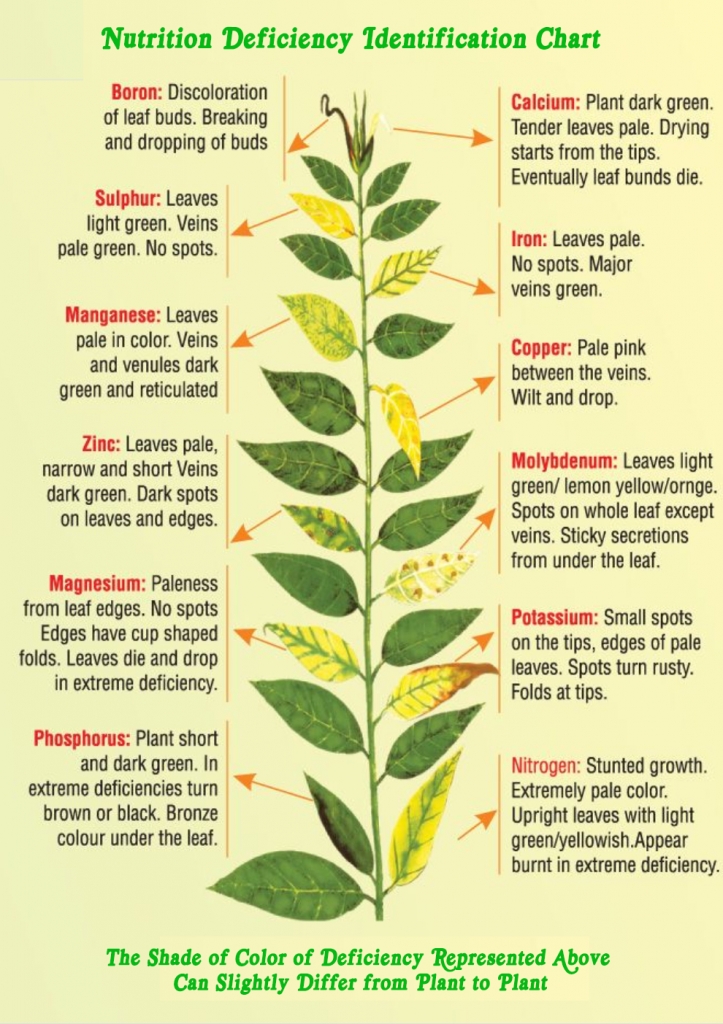 In Aquaponics, the main source of plant nutrients is fish food. However, plants have different nutritional needs than fish, and some other nutrients from the fish waste remain in a solid-state that doesn’t do the plants any good. If the fish feed pellets don’t carry all the nutrients the plants need but are a complete food for the fish to grow, you’ll need to play with your bio-chemist set often enough. Fish do not need the same amount of iron, potassium, or calcium that plants need to thrive. So deficiencies of these nutrients may occur. Below are the common nutrient deficiencies in Aquaponics.
In Aquaponics, the main source of plant nutrients is fish food. However, plants have different nutritional needs than fish, and some other nutrients from the fish waste remain in a solid-state that doesn’t do the plants any good. If the fish feed pellets don’t carry all the nutrients the plants need but are a complete food for the fish to grow, you’ll need to play with your bio-chemist set often enough. Fish do not need the same amount of iron, potassium, or calcium that plants need to thrive. So deficiencies of these nutrients may occur. Below are the common nutrient deficiencies in Aquaponics.
Iron Deficiency
Signs of Iron Deficiency:
- Yellowing color on plant leaves
- Spots on immature leaves
How to supplement iron:
To supplement iron in your aquaponics system, you need to add iron that the plants can absorb. This means using chelated iron. Adding chelated iron to your system will only be effective if your pH is 7.5 or lower. Your aim is 2 mg/liter, so you need to calculate your water tank’s size and add the required amount of iron every 3 – 4 weeks. Dive Deeper on this Treatment
Potassium Deficiency
Signs of Potassium Deficiency:
- Older leaves of the plants show interveinal chlorosis and spots or scorching, which progresses to the younger leaves when the deficiency becomes more severe.
How to supplement potassium:
- By Spraying – You can use potassium chloride and spray it into the plant leaves. You must repeat the process at least once a week to avoid potassium deficiency in your aquaponics plants.
- Adding a potassium supplement to your fish food through kelp meal concentrate. Other options are adding potassium sulfate or potassium hydroxide to your fish food. More Info on How to Treat It Here.
Calcium Deficiency
Signs of Calcium Deficiency:
- Black, dead areas of the young plant tissue, known as necrosis.
- Slight chlorosis to brown or black scorching on new leaf tips.
- Fresh leaves are distorted with hooked tips and irregular shapes.
How to supplement calcium:
- One way to supplement calcium deficiency in aquaponics is to use hydrated (or agricultural) lime, which will also supplement calcium and magnesium besides raising the pH levels.
- Another way is by spraying calcium chloride mixed with some water to your plants. The ratio should be four teaspoons of calcium chloride per gallon of water. You can increase the dose if needed and spray once a week to your plants. Delve Deeper into the Treatment Here
Phosphorus Deficiency
Signs of Phosphorus Deficiency:
- Stunted plant growth.
- Darkening of the leaves near the plants’ base.
- Purple or reddish color of the leaves.
- Spare leaf growth.
How to supplement phosphorus:
The most common method to add phosphorus to aquaponics is to use rock phosphate. The supplement can be added directly to your grow beds. Avoid adding it directly to the water, and your grow bed should be shaded from the direct sunlight to ensure that it doesn’t dissolve before the plant can absorb it.
The best way to ensure that plants will not suffer nutrient deficiencies in aquaponics is to maintain the 6-7 pH water level and feed the fish with a balanced and complete diet. Another good way is to provide all the nutrients that plants require to grow by growing media beds. Grow media beds offer an excellent environment for nutrients to develop into your system, and you can also add worms in your grow media bed to help break the solids and provide more nutrients for your plants. Click Here for the Full Treatment Info
Magnesium Deficiency
Signs of Magnesium Deficiency:
- Yellowing between the leaf veins, sometimes with reddish-brown tints and early leaf fall. Magnesium deficiency is common in tomatoes, apples, grapevines, raspberries, roses, and rhododendrons.
How to supplement Magnesium:
- Your first solution will be Epsom salts. Epsom salts are an essential feed for high foliage plants in the summer.
- To apply, you should dilute the salts, with 20 grams of salts per liter of water.
- Spray the Epsom salts mix fortnightly, maybe two or three times over the summer months.
- Remember that spraying in dull weather is always best, as you will want to avoid scorching to the leaves. More Info on How to Treat It Here.
Overall TakeAway
Monitoring your Aquaponics System is an essential part of being a Backyard Farmer. When you are able to keep on top of the potential issues you can circumvent many of the pitfalls and all-out disasters that can befall an ecosystem. The more you are into your Food Independence, the more appreciation you will have for the grand nature of all created things. I know I have!

